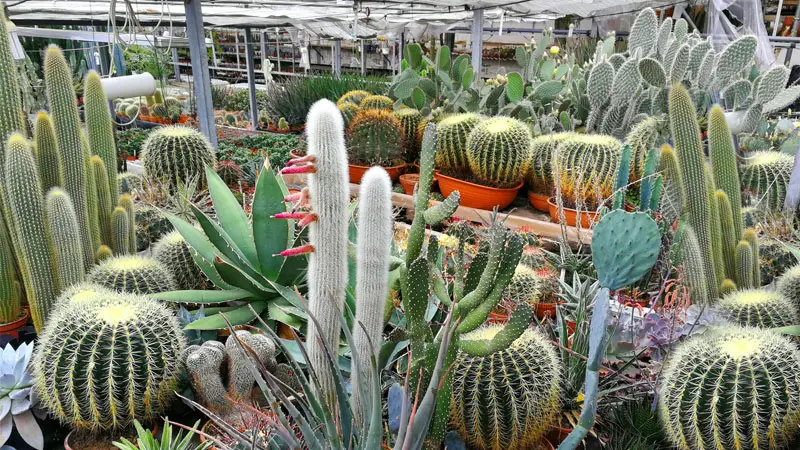Cacti are a type of succulent plant, meaning they store water in their leaves or stems. They’re best known for being prickly, fast, and having a 1,000 needles attack if they get mad at you. But more importantly, they make for some great, sun-loving (usually) houseplants and are incredibly easy to care for.
Not to be confused with succulents (another kind of plant that stores water but trends to be tropical and more shade-loving), cacti come in many shapes and sizes, most of which don’t look anything like pincushions or coat racks!
To illustrate, here are 23 different types of cactus (or cacti), some of which you may have even seen in local gardening centers. Many can be kept indoors while others may give you ideas for that cactus garden you’ve always wanted.
See Also: 28 Types of Ferns
Types of Cacti
1. Barbados Gooseberry (Pereskia aculeate)
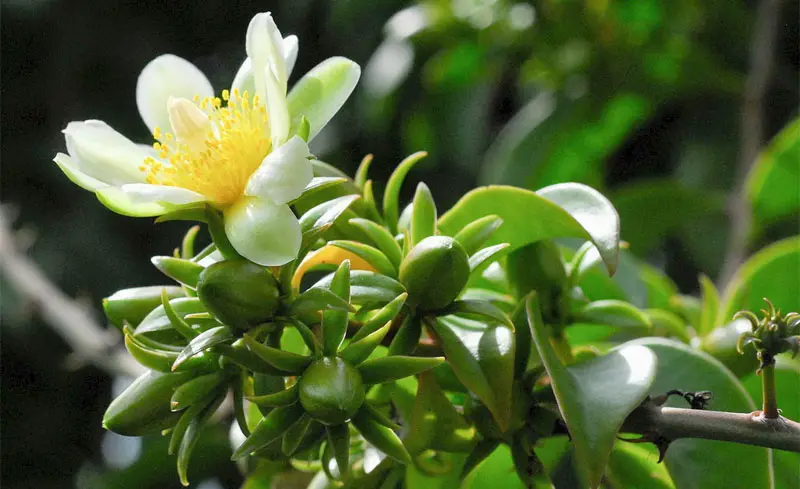
This unusual cactus is actually a vining plant that features edible leaves and fruits rich in iron and protein. They can reach a total size of 33’ and are a good choice when you want a drought-loving garden plant.
Read Also: 25 Kinds of Lemons
2. Barrel Cactus (Echinocactus spp, Ferocactus spp.)
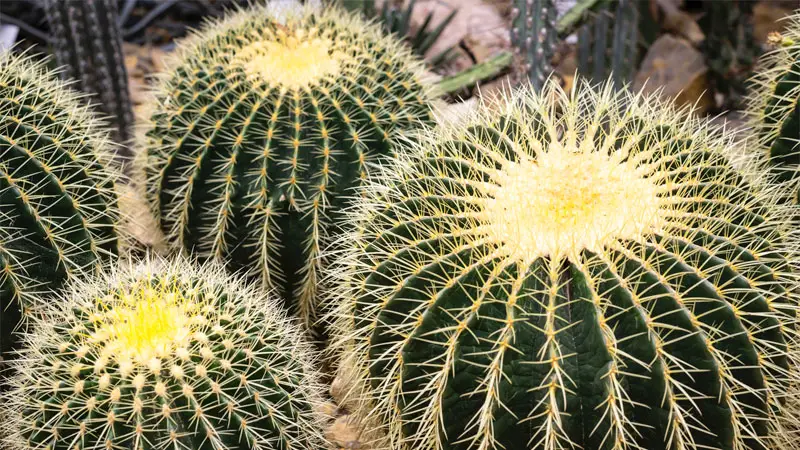
The genus Ferocactus has about 30 different species and Echinocactus has six, all commonly referred to as barrel cacti. As the cacti grow older, they develop ridges and take on a barrel-like appearance.
Size and flower colors vary based on the species, and only a few grow in clusters while the rest tend to be solitary plants. They can live for around 100 years, making them a great heirloom plant.
3. Bishop’s Cap (Astrophytum myriostigma, Astrophytum ornatum)
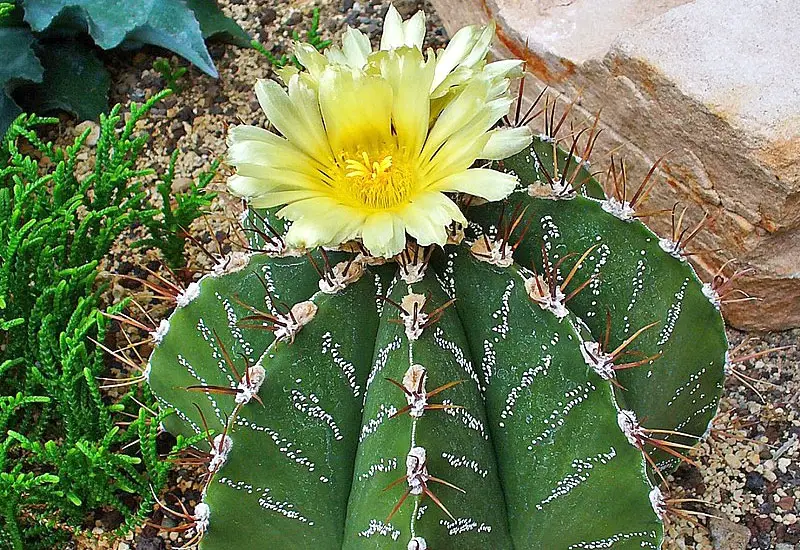
Much like the parson’s nose, these cacti can be found in southwestern North America deserts, particularly central to northeastern Mexico. They won’t flower for the first six or so years and can reach about 40” tall.
They get their name from the way the ribs stick out to resemble the hats a bishop would wear. Oddly enough, these cacti don’t like too much sun.
Related: 13 Types of Terrain
4. Blue Myrtle Cactus (Myrtillocactus geometrizans)
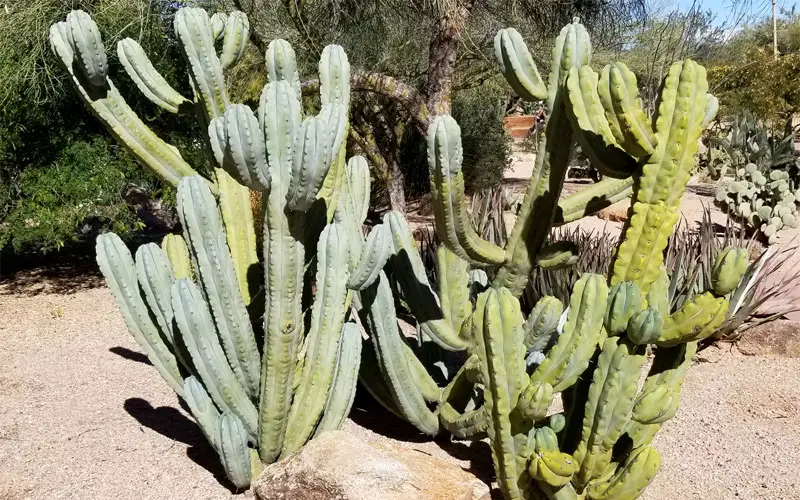
Another cactus with edible fruit, the blue candle hails from Mexico and can grow up to 16.5’ tall. The arms give this cactus an almost candelabra shape, and has a bluish tint to it.
5. Breast Cactus (Myrtillocactus geometrizans ‘fukurokuryuzinboku’)
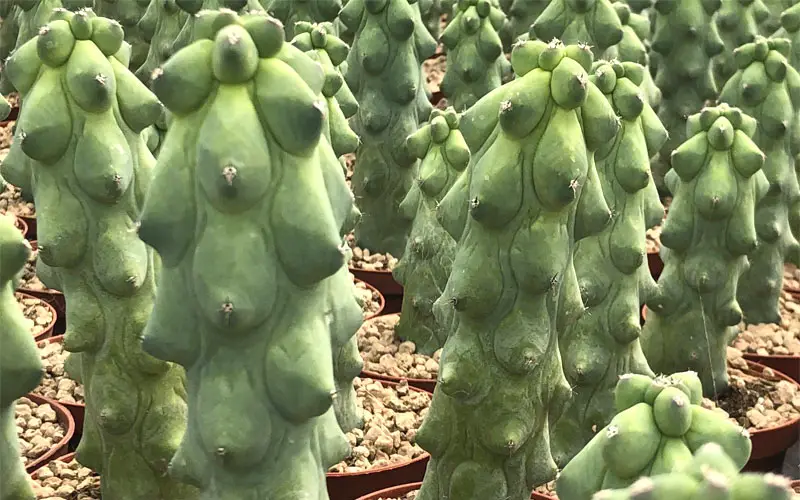
No list of cacti can be called complete without at least one bizarre Japanese entry. In this case, it’s the blue candle cultivar ‘fukurokuryuzinboku’, lovingly referred to as the breast cactus, boob cactus, etc. One look at this very Japanese plant will show why as the bluish cactus has swollen, chinned ribs that look like women’s breasts.
Even more comical are the placement of the cacti’s areolas, sporting three to nine spines each. Reaching up to 6’ tall, these crazy plants look like something Junji Ito would come up with!
6. Bunny Ears Cactus (Opuntia microdasys)
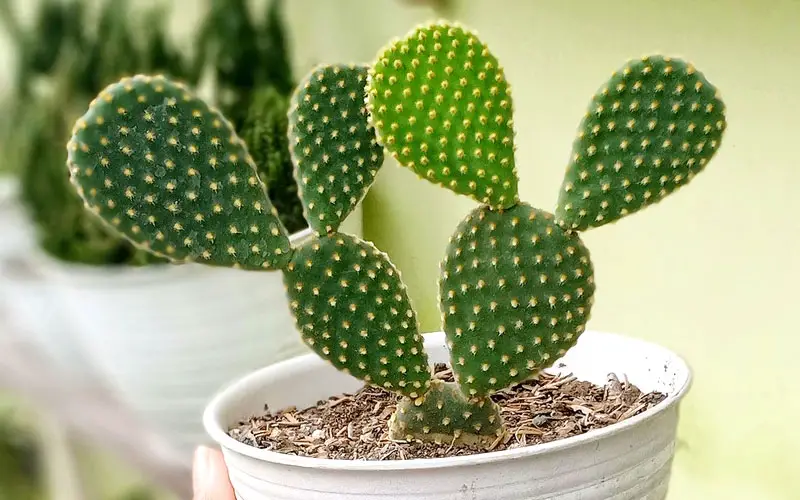
This is a fairly tall cactus when it comes to indoors, but remains quite popular due to the two prickly pads that resemble (you guessed it) bunny ears.
The native of Mexico can produce white flowers that give way to purple fruit during the summer if given proper lighting conditions. As a side note, you may also find this plant for sale under its other common nicknames of angel wings or the Mickey cactus.
7. Chin Cactus (Gymnocalycium)
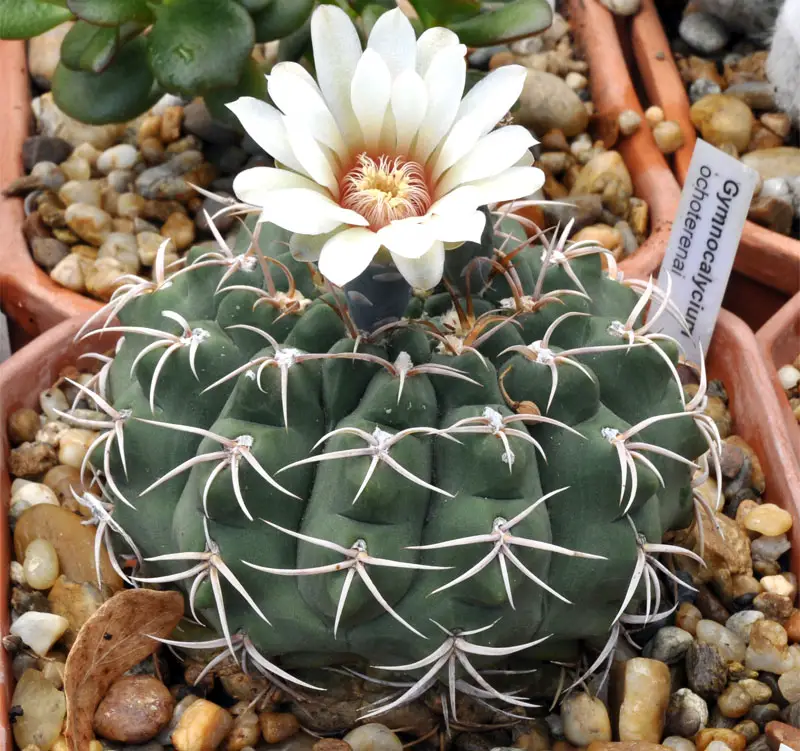
This genus of around 70 different plants comes to us from South America and gets its name from the lack of hair or spines on its flowers.
Care for chin plants vary from one species to another, but they tend to be small, rounded with flattened spines on the plant itself, and can produce a flower that’s up to as wide as the entire plant.
8. Holiday Cactus (Schlumbergera spp.)

The Schlumbergera genus has between six and nine species, plus a few hybrids. The most famous of these are the Christmas cactus (Schlumbergera x buckleyi), Thanksgiving cactus (Schlumbergera truncata), and Easter cactus (Schlumbergera gaertneri).
Collectively, these three are known as holiday cacti because they tend to bloom around the holidays they’re named after.
It’s not uncommon for various Schlumbergeras to be accidentally sold as Christmas cacti due to how similar they all look. However, close examination of the segmented stems (there are no leaves on these plants) can reveal the actual species due to subtle differences in appearance.
See Also: 17 Types of Ivy
9. Jumping Cholla Cactus (Cylindropuntia fulgida)
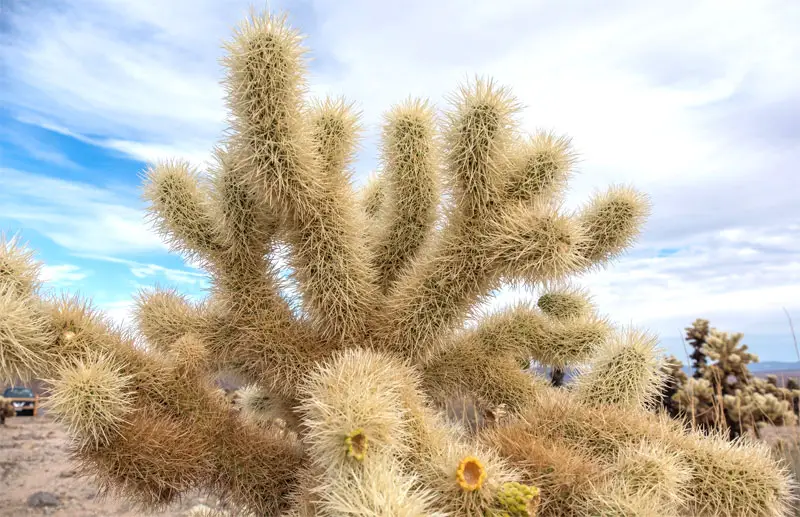
One of the most popular species of Cholla, this cactus is an arborescent, meaning it resembles a tree. However, instead of leaves, the branches are covered in barbed spines that can be a nightmare to remove if you get stuck with one.
They’re found throughout the Sonora Desert, and some masochistic people even keep them in their gardens.
Read Also: 17 Types of Barbed Wire
10. Claret Cup Cactus (Echinocereus triglochidiatus)
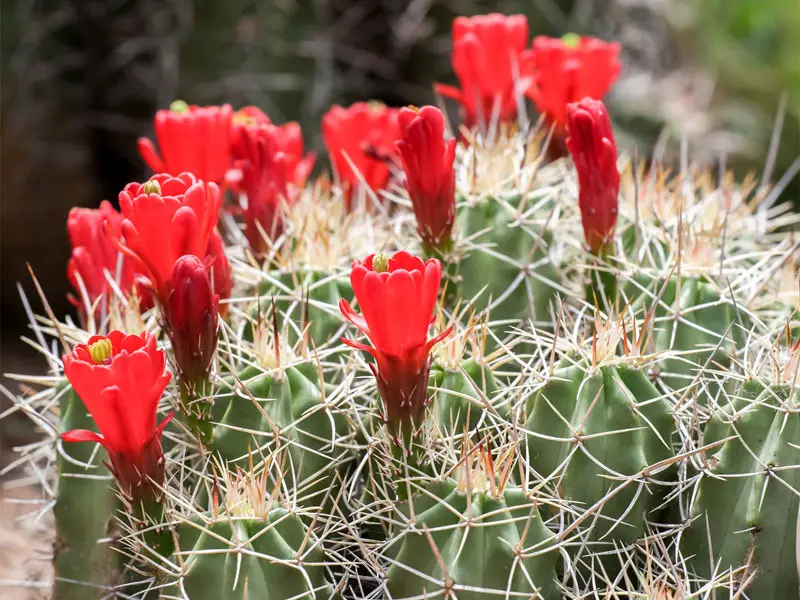
Also called the kingcup cactus, this interesting species of hedgehog cactus forms dense clumps of bulbous stems, sometimes numbering in the hundreds. It’s most famously known for its tubular flowers, which can be a bright orange-red to scarlet color.
It has numerous subspecies and is currently considered endangered.
Read Also: 4 Types of Endangered Animals
11. Mexican Fence Post Cactus (Pachycereus marginatus)
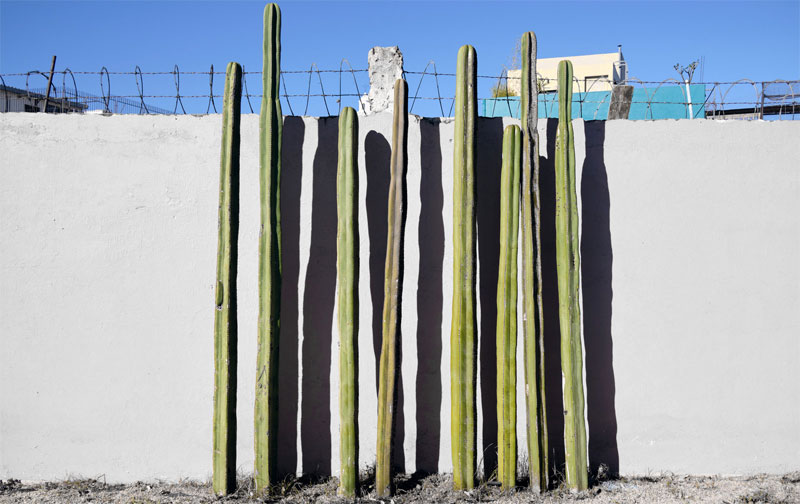
Measuring up to 20’ tall, this species has a most unusual function for a cactus: it’s literally used as a slow-growing fence post in Mexico.
As the plant ages, they develop arms, which are used to make cuttings that can then be used to expand the natural fence.
12. Moon Cactus (Gymnocalycium mihanovichii)
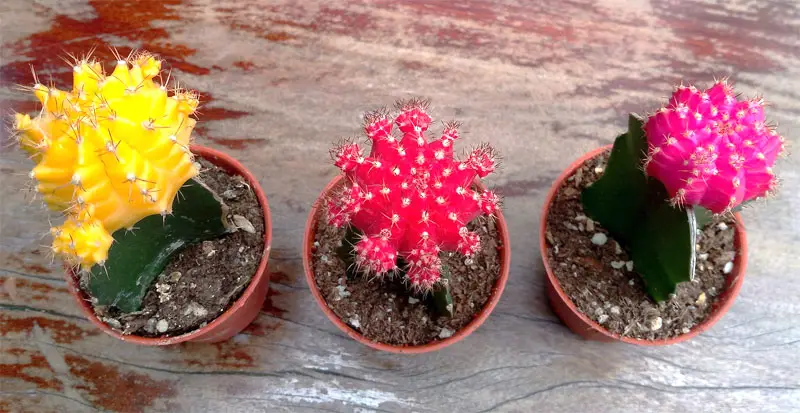
This species of chin cactus can be bright orange, pink, red, or yellow. The many colors are actually due to a mutation where the plant lacks chlorophyll.
In order for the mutations to survive, they’re grafted onto Selenicereus (formerly called Hylocereus), and the resulting hybrids can be bought in garden centers and drug stores across the US.
13. Old Lady Cactus (Mammillaria hahniana)
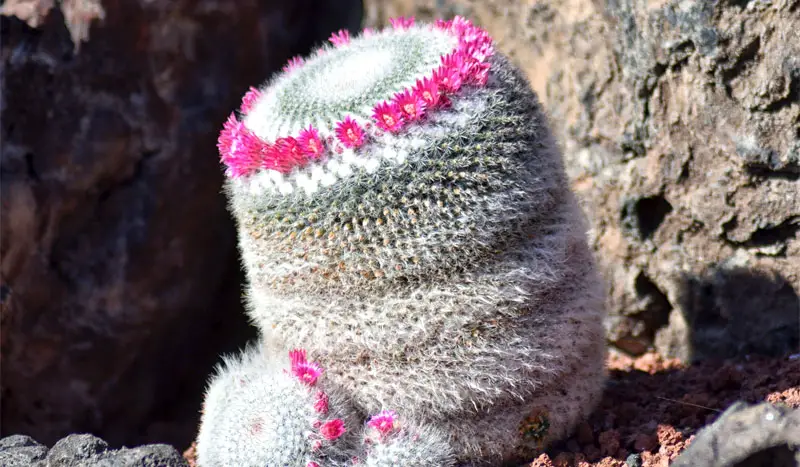
This pincushion cactus gets its name from all the tiny white down and spines all over its body. During spring and summer, small reddish-purple flowers appear around the top of the plant, sometimes forming a complete ring.
Oddly enough, these plants have such a silly appearance one would swear they were the inspiration for Zeldar’s hair.
14. Old Man Cactus (Cephalocereus senilis)
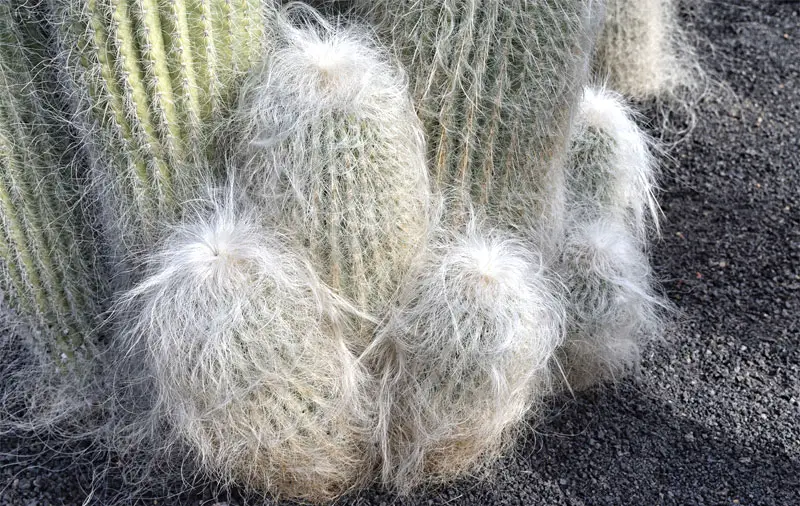
The old lady cactus’s counterpart can grow quite tall and is covered in silvery white. As is the fate of many men, it will slowly bald over time.
The species is endangered in the wild but is preserved in homes worldwide. It will take up to 20 years before it flowers, and will likely outlive your grandkids.
15. Organ Pipe Cactus (Stenocereus thurberi)
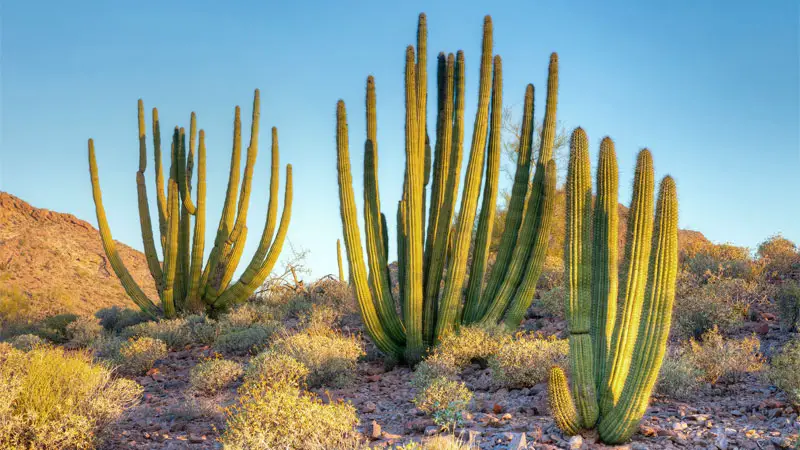
With stems that range from 16 to 26’ tall, this cactus resembles a clustered pipe organ. Its flesh is edible, and the tubular flowers are generally pollinated by bats.
16. Peanut Cactus (Echinopsis chamaecereus)
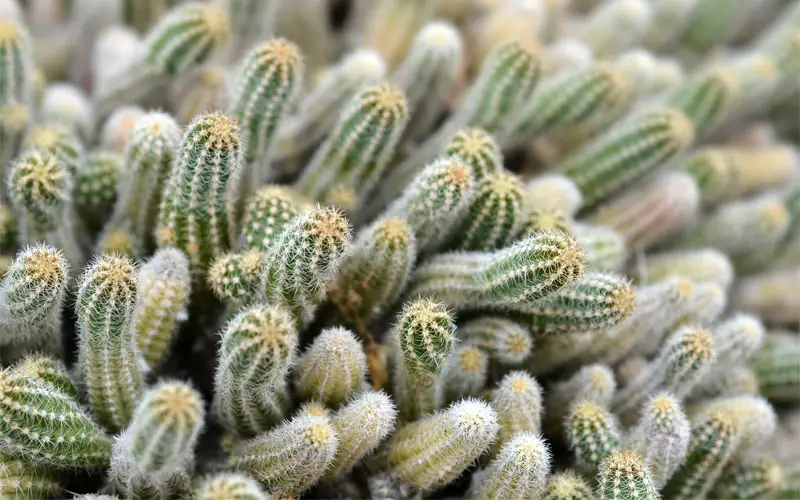
This unusual cactus produces 6” wide orange flowers in late spring and is only about the same in height. The small stems slightly resemble peanuts, hence the name.
17. Prickly Pear Cactus (Opuntia)
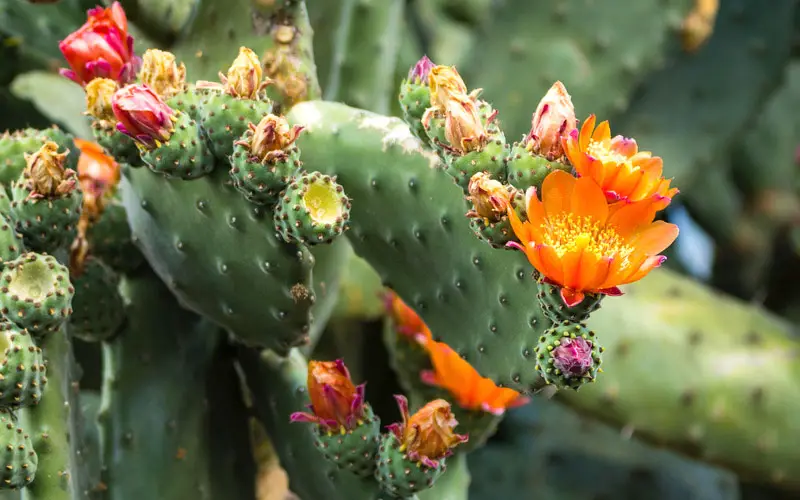
This genus has one of the most commonly recognized names among cacti. The edible fruit carry on a longstanding tradition of the Spanish naming things with words that translate to seafood in other languages, in this case tuna (another famous example is that tako is Japanese for octopus).
Oddly enough, a species of scale called Dactylopius coccus that infests this genus is actually used in creating a natural food and makeup dye called cochineal.
18. Queen of the Night (Epiphyllum oxypetalum)
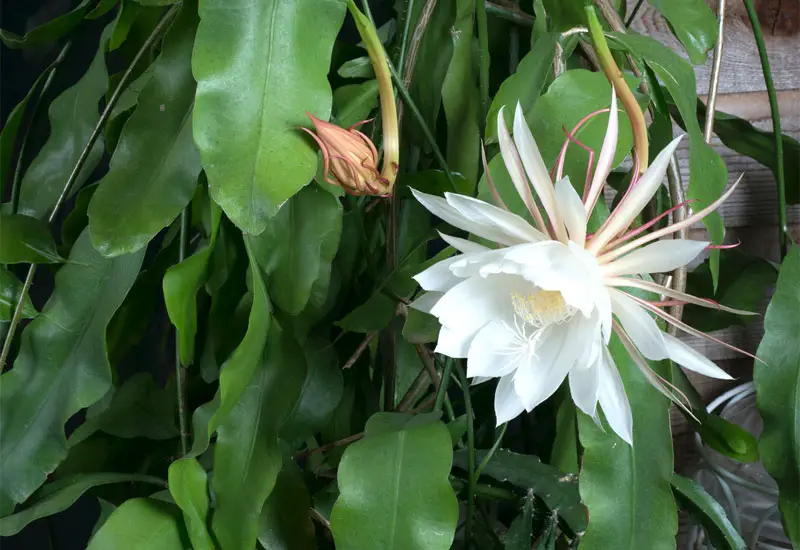
This climber is native to Brazil where it lives on trees and blooms at night, revealing large, white flowers. Its primary stem grows to about 19.5’, while the secondary stems are only about 1’ each. It has a sweet scent, making it a popular addition to gardens.
19. Rat Tail Cactus (Aprocactus flagelliformis)
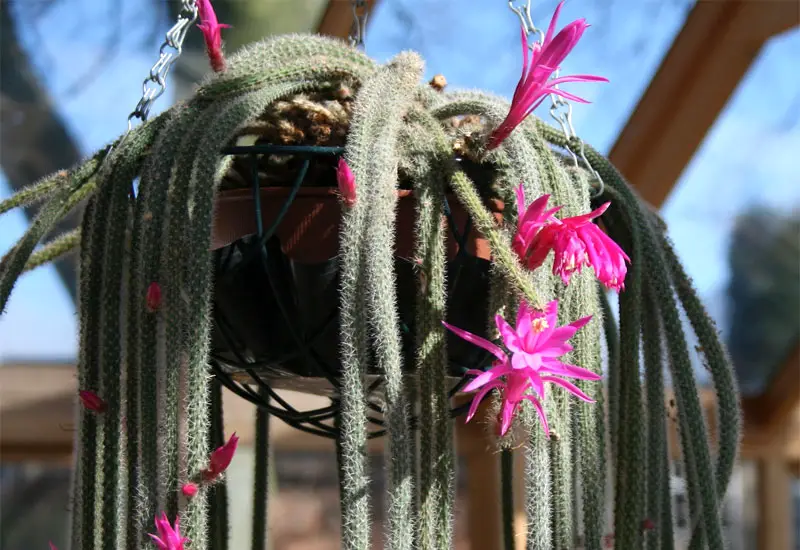
This cactus gets its unusual name from the long trailing stems it produces. They’re popular both indoors and outdoors, and produce orange, pink, red, or violet flowers.
20. Saguaro Cactus (Carnegiea gigantea)
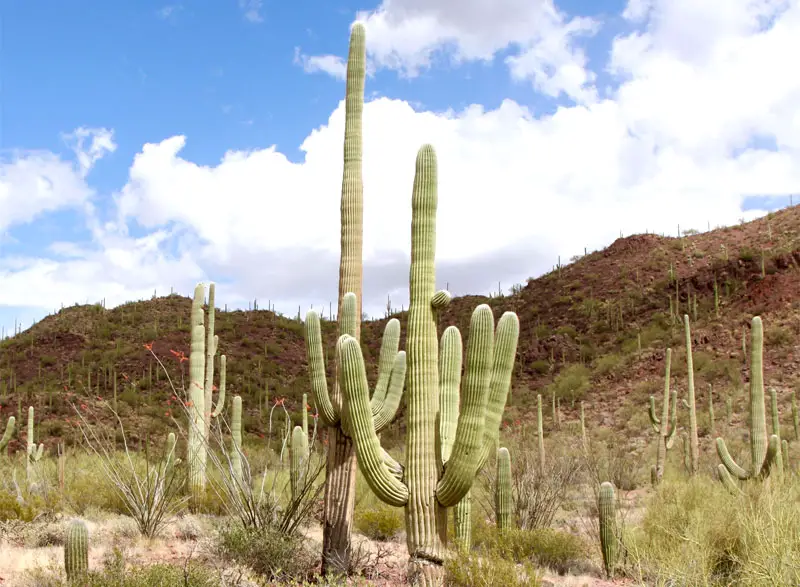
You’ve probably never heard of the Sonoran Desert, which is located in Arizona, California, and Mexico. Just as likely, you’ve probably never heard of someone growing a Saguaro cactus.
These traditional looking cacti are slow growers and may reach a height of 40 feet in their 150-200 year lifespan. Yet for a good portion of that, they’re actually a decent houseplant, provided you give them enough sun.
21. Silver Torch Cactus (Cleistocactus strausii)
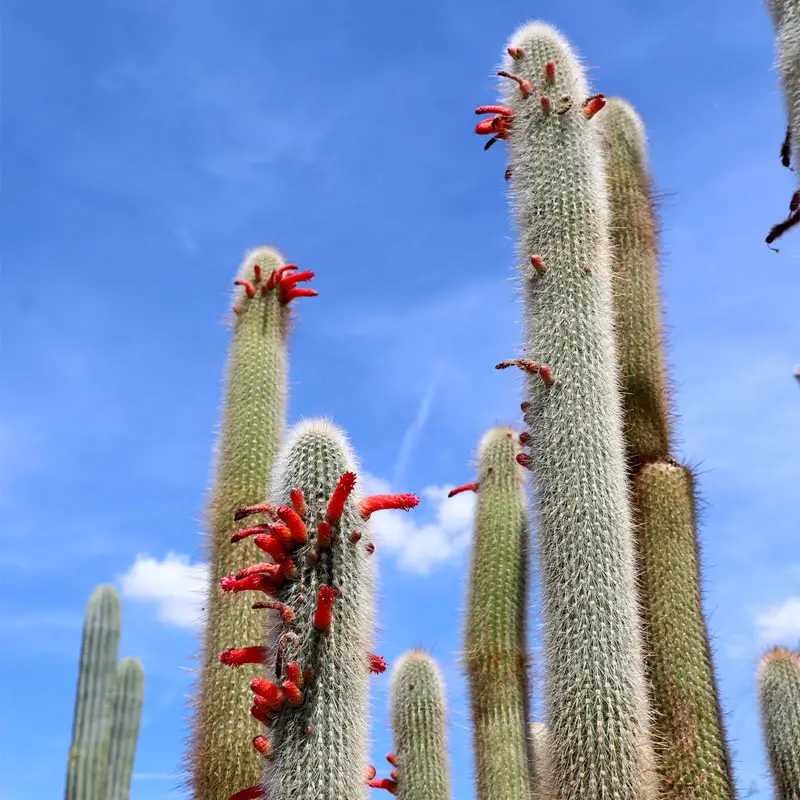
This mountain cactus reaches about 9.8’ in height and is sometimes called the wooly torch cactus. It grows in clusters of long, thin grey-green columns which are surprisingly frost-tolerant.
In summer, it produces burgundy to deep red flowers which have a habit of not wanting to open in the wild but seem to thrive when cultivated. While native to Bolivia, it’s become a popular cactus in gardens across Great Britain.
22. Star Cactus (Astrophytum asteria)
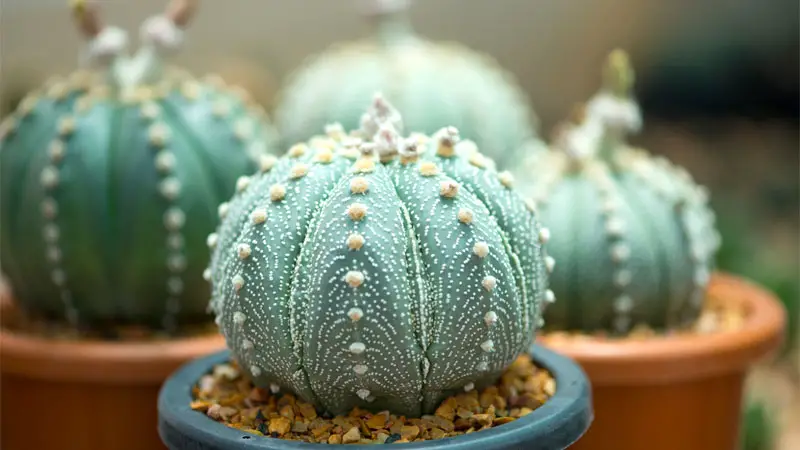
You may have seen these cacti under other names, such as sand dollars or sea urchins. They’re only about 6” in diameter and have a rounded, 8-section body that sports white dots and hairs.
A small yellow or pink flower appears in the spring to add to its appeal.
23. Totem Pole Cactus (Pachycereus schottii f. monstrosus)
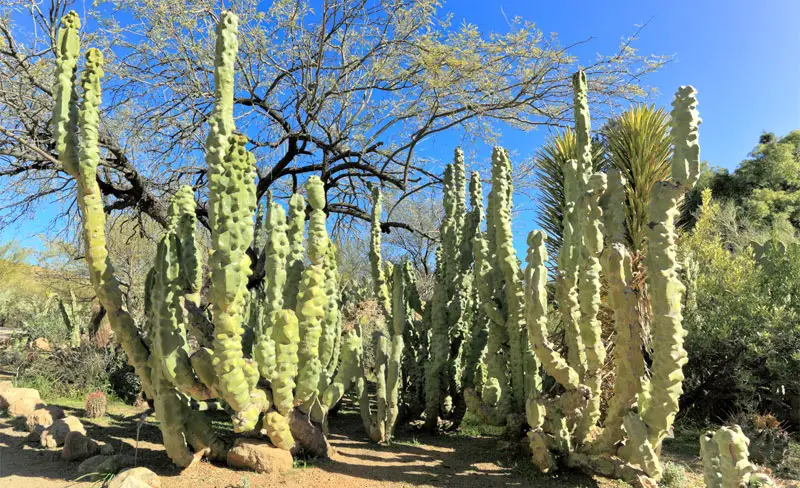
This spineless, bumpy-skinned cactus reaches about 12’ tall and almost looks as though it had been carved. It has nocturnal pink blooms and edible fruit.

